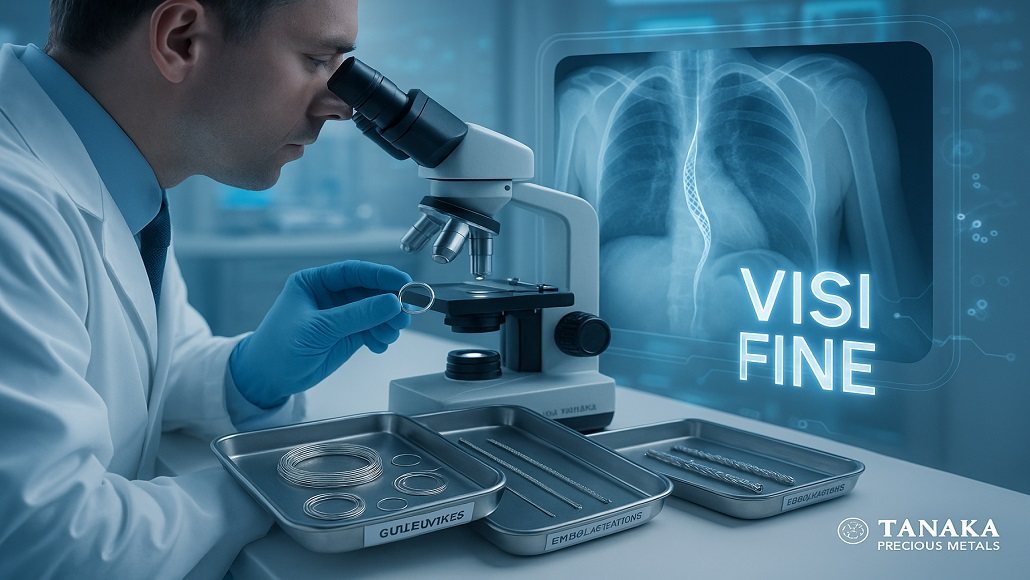Applying radiopaque materials within the parts of medical devices may help support clinicians to precisely position as well as operate those devices that are under x-ray guidance during endovascular catheter processes.
Medical device design engineers may as well face a lot of issues designing such devices. However, when it comes to the field of functional materials for medical devices, there are only a limited number of materials that offer high x-ray opacity, says the section manager of the sales department at Tanaka Precious Metal Technologies, Yusuke Minagawa. Hence, they do recognize the rising requirement when it comes to the development of new materials so as to attain a further performance enhancement.
According to Minagawa, materials that contain precious materials happen to be considered to hold unmatched potential due to their addressing of these challenges. Making use of precious materials like platinum and gold within medical devices enables those devices to be visible through x-rays. All thanks to their relatively high specific gravity along with excellent radiopacity.
In order to meet these challenges, Tanaka has launched its Visi Fine series of highly radiopaque, precious metal materials, which includes platinum alloy wire. Minagawa further adds that apart from achieving the x-ray opacity, applying the inherent properties when it comes to precious materials like oxidation along with corrosion resistance in medical components is considered a very valuable approach. This helps in preventing performance degradation when it comes to medical materials and also decreases the potential effect on the human body.
It is well to be noted that Tanaka tapped into its very broad history when it comes to precious materials while revising this particular solution for medical devices. Minagawa says that with a 140-year legacy, their company happens to possess advanced material processing capacities, which are backed by extensive expertise along with technical know-how in terms of precious metal development as a specialized manufacturer. Given that their materials get used with components for medical devices that are implanted within the human body, they make sure of dependability by designing every aspect right from raw materials to processing steps in order to meet the strict demands of medical applications.
He continues that the Visi Fine series makes utmost use of the long-standing expertise of Tanaka when it comes to precious metal materials development. Its major strength happens to lie in the capacity to personalize materials by way of using proprietary technologies, which include ultrafine wire processing, multiple melting techniques, and also laser machining.
Resistance when it comes to oxidation along with corrosion happens to be the major medical device requirement. According to Minagawa, it is a known fact that exposure to bodily fluids like blood can lead to corrosion, which may as well result in the degradation as far as the performance of medical device components is concerned. This can also potentially affect the human body. Oxidation along with corrosion resistance happens to be the fundamental trait of any precious metal, thereby making them well suited in terms of being the right materials for medical components.
It is well to be noted that the Visi Fine series can be very well incorporated in the form of coils for usage in embolization coils as well as guidewires. When it comes to catheters, they can very well be used as coil markers, and for stents as part of the braided structure.
Minagawa happens to explain that while Tanaka does not design medical devices, they do believe that a very in-depth discussion with regard to the properties of their precious metal materials along with their applicable forms can very well lead to solutions that are effective and that meet the stringent and specific requirements. Their objective happens to be supporting the medical device and also the component manufacturers by way of expertise within material development along with processing.


















